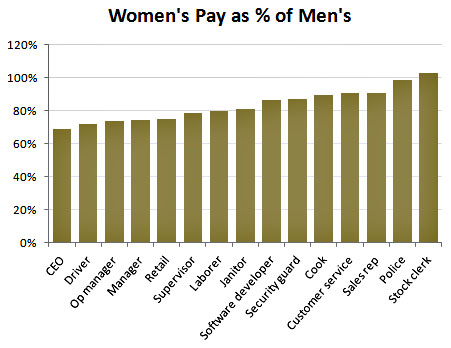Are women paid less than men? You betcha. Are they paid 77 cents for every dollar that men make? That’s more contested, and Bob Somerby is pretty scathing about Rachel Maddow’s insistence on sticking with that number even when her own guests tell her it’s not quite right.
But this argument sort of misses the point. It’s true that some of the gap goes away when you account for the fact that women tend to work in different jobs than men and take more time off to have children. But that’s all part of the story. When all’s said and done, women are punished financially in three different ways: because “women’s jobs” have historically paid less than jobs dominated by men; because women are expected to take time off when they have children, which reduces their seniority; and because even when they’re in the same job with the same  amount of experience, they get paid less than men. All of these things are part of the pay gap. Whether you call all three of them “discrimination” is more a matter of taste than anything else.
amount of experience, they get paid less than men. All of these things are part of the pay gap. Whether you call all three of them “discrimination” is more a matter of taste than anything else.
And where is the pay gap most pronounced? That might surprise you. (Or might not.) The Institute for Women’s Policy Research took a look at pay for the most common men’s professions, and the biggest gap came in the very area that’s supposedly the most meritocratic job title in the country: CEO. How about them apples?















